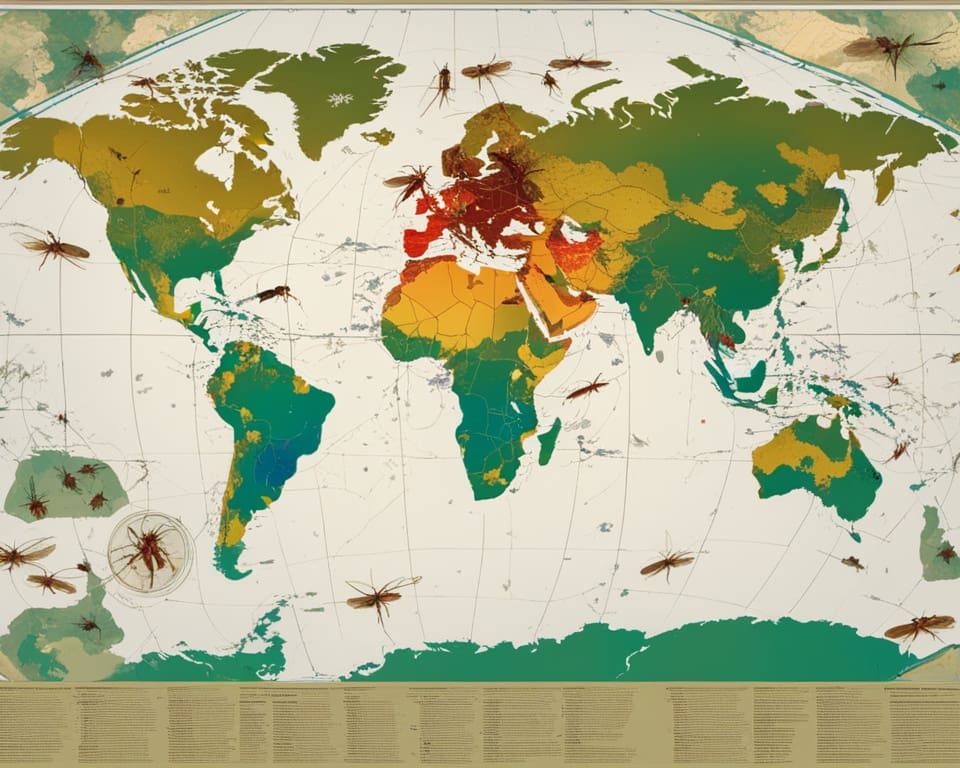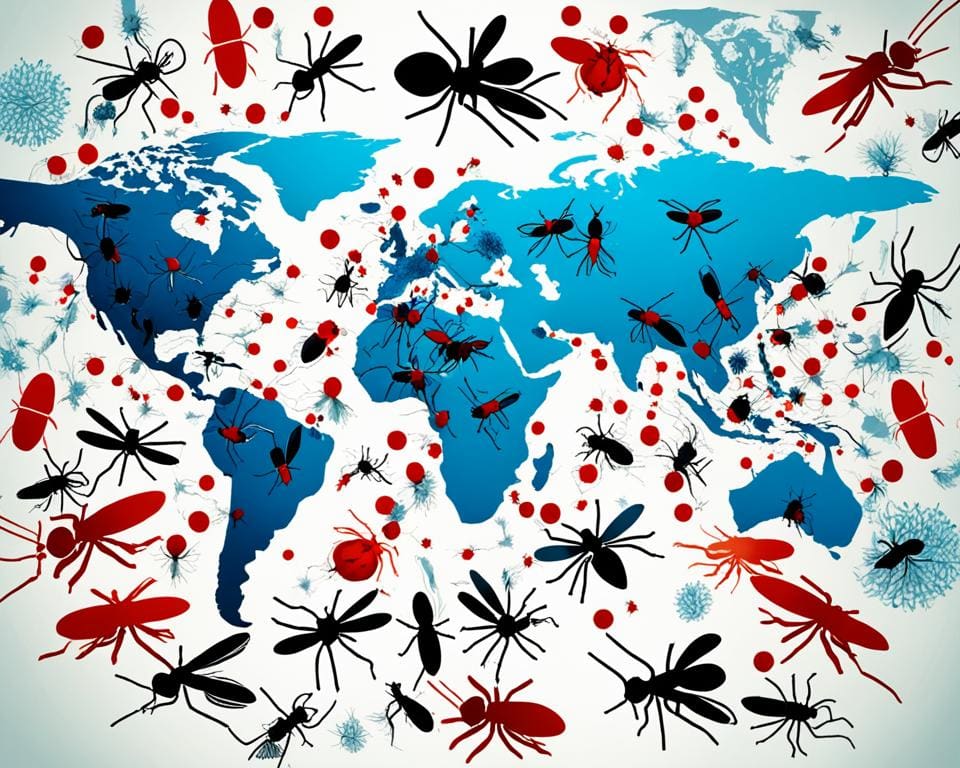Mosquitoes are more than just summer nuisances; they are dangerous vectors that can transmit various diseases, posing serious health risks to humans. Understanding what diseases do mosquitoes carry is crucial for effective prevention and awareness. According to the Centers for Disease Control and Prevention (CDC), diseases transmitted by mosquitoes include the West Nile virus, Zika virus, and dengue fever.
Recent statistics reveal that mosquito-borne illnesses lead to millions of infections globally, making them a significant public health concern. The World Health Organization (WHO) highlights how these mosquito-related diseases can inflict severe health implications not only on individuals but also on entire healthcare systems. It is essential for communities—especially in regions where these insects are prevalent—to have a comprehensive understanding of these threats.
Understanding Mosquito-Borne Illnesses
Public awareness of mosquito-borne illnesses is essential for health and safety. Understanding how mosquito vectors operate sheds light on their role in the spread of these serious health risks. Various mosquito species serve as critical transmission agents for numerous diseases transmitted by mosquitoes, making knowledge about them crucial for prevention efforts.
Overview of Mosquito Vectors
Mosquito vectors refer to specific species responsible for the transmission of pathogens that lead to mosquito-borne illnesses. Notable examples include:
- Aedes aegypti – Known for spreading dengue and Zika viruses.
- Anopheles – The primary vector for malaria.
These mosquitoes thrive in stagnant water, offering ideal breeding conditions. Their life cycles are intricately linked to water sources, allowing for rapid population growth and increased risks of mosquito transmitted diseases.
How Mosquitoes Transmit Diseases
Grasping the process by which mosquitoes transmit diseases is vital in addressing public health efforts. When a mosquito pierces the skin to feed, it injects saliva containing pathogens into the bloodstream. This method of transmission effectively spreads diseases that can lead to health complications of various degrees. Awareness of these processes not only informs preventive measures but underscores the significance of combating the threats posed by diseases transmitted by mosquitoes.

What Diseases Do Mosquitoes Carry
Mosquitoes serve as vectors for numerous harmful illnesses that affect millions each year. Understanding the various common mosquito-borne diseases is critical for public health awareness and prevention strategies. These diseases not only impact individual health but also pose significant challenges to healthcare systems globally.
Common Mosquito-Borne Diseases
Several well-known illnesses are classified as mosquito transmitted diseases. These include:
- Dengue Fever
- Chikungunya
- Zika Virus
- Yellow Fever
- Malaria
Understanding these diseases transmitted by mosquitoes can help communities take necessary precautions. For instance, dengue fever is particularly concerning due to its potential to cause severe complications such as hemorrhage and shock.
Health Risks from Mosquitoes
The health risks from mosquitoes extend beyond immediate medical concerns. Individuals infected with mosquito-borne illnesses may face long-term health effects, including chronic fatigue and organ damage. Additionally, these diseases can strain healthcare resources, resulting in significant economic burdens.
The World Health Organization emphasizes that comprehensive surveillance and prompt response strategies are vital in mitigating the impacts of these diseases. Awareness and education remain key components in combating the widespread threat posed by mosquito-borne illnesses.
Preventing Mosquito-Borne Illnesses
In the fight against mosquito-borne illnesses, proactive measures play a vital role. Individuals and communities can work together to implement effective prevention strategies that minimize risk and protect public health.
Effective Prevention Strategies
Community engagement is essential for raising awareness and fostering participation in vector control programs. These initiatives often focus on:
- Eliminating standing water where mosquitoes breed.
- Distributing educational materials about personal protective measures.
- Involving residents in neighborhood clean-up events to decrease breeding sites.
By prioritizing collective action, communities can make significant strides toward preventing mosquito-borne illnesses.
Using Protective Gear and Insect Repellents
When spending time outdoors, especially in areas prone to mosquito activity, using insect repellents becomes crucial. The CDC recommends applying EPA-registered products that contain:
- DEET
- Picaridin
- Oil of lemon eucalyptus
Wearing long sleeves and pants can provide additional protection, making it easier to enjoy the outdoors without the worry of mosquito-related diseases.
Environmental Control Measures
Maintaining a clean environment is another key aspect of preventing mosquito-borne illnesses. Simple practices can make a significant impact:
- Using screens on windows and doors to keep mosquitoes outside.
- Regularly checking and cleaning water storage containers.
- Promptly addressing any areas of standing water in yards and neighborhoods.
Implementing these environmental control measures can lead to a dramatic reduction in mosquito populations, fostering safer living spaces for everyone.
Raising Awareness About Mosquito-Related Diseases
Raising awareness about mosquito-related diseases is essential for effective public health education. By fostering a better understanding of the symptoms associated with these illnesses, communities become better equipped to take necessary actions in seeking timely treatment. Awareness campaigns serve as a foundation for informing individuals about the importance of prevention strategies, allowing them to protect themselves and their loved ones from potential health risks.
The collaboration of public health organizations, local governments, and healthcare providers can amplify the impact of educational initiatives. By disseminating vital information effectively, these groups can mobilize community response efforts to combat mosquito-borne illnesses. Through dedicated efforts in raising awareness, communities can be empowered to not only recognize the threats posed by mosquito-related diseases but also actively participate in preventive measures.
It is through education and increased vigilance that the risks of mosquito-related diseases can be significantly diminished. Encouraging community participation calls for a proactive approach in adopting prevention strategies and sharing knowledge. Together, we can build healthier communities where the negative effects of mosquito-borne illnesses are minimized, fostering well-being for all.









